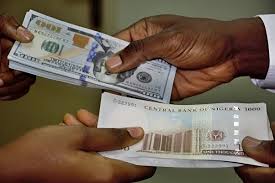The Nigerian Naira’s stability continues to face significant challenges as a notable divergence persists between the country’s official and street foreign exchange markets. As of Monday, November 3, 2025, this two-tiered pricing structure is raising concerns among analysts and deepening the financial strain on consumers and businesses.
Data published by the Central Bank of Nigeria (CBN) shows that in the formal Daily Nigerian Foreign Exchange Market (NFEM), the official rate which is the volume-weighted average used as the baseline for banks settled at ₦1,421.73 to the US dollar.
However, the dynamics of the street tell a different story. In the highly active parallel market, where BDCs and street dealers transact, the dollar is trading at a premium. Traders in Lagos, Nigeria’s commercial hub, reported buying the dollar around $\text{₦1,440}$ and selling in the range of $\text{₦1,450}$. Across other major cities, street quotations were reported to range as high as $\text{₦1,515}$.
Why the Dual Market Gap Matters
The core issue lies in the widening chasm between the NFEM’s official rate and the parallel market’s higher figures. This gap is a direct signal of liquidity strains within the formal system, which is unable to meet the nation’s high demand for foreign exchange.
For the economy, this divergence has serious consequences:
- Increased Import Costs: Businesses that are unable to secure dollars at the CBN’s official counter are forced into the more expensive parallel market. This dramatically increases their operational costs and the price of imported goods.
- Inflationary Pressure: The elevated cost of dollars on the street is a key factor driving up import prices, which in turn fuels domestic inflation and erodes the purchasing power of the average citizen.
- Fragmented Pricing: Market-monitoring services observed intraday trading on electronic platforms within a tight but strained band, roughly between $\text{₦1,445}$ and $\text{₦1,453}$, reflecting the difficulty in achieving unified price discovery across various trading venues.
Analysts attribute the continued gap to dollar demand from importers, remittance flows, and the timing of central bank interventions. As long as this spread persists, consumers and travelers relying on street vendors will continue to pay substantially more than the official rate.

